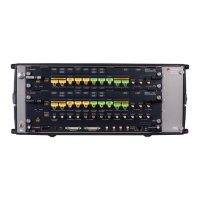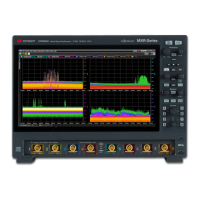20 M8000 Series of BER Test Solutions Tips for Preventing Damage
1 Tips for Preventing Damage
• Check AC power quality and polarity; typical AC voltage required is
100 V, 120 V, 220 V ±10%, 240 V +5% / -10% or 380 V (3 Phase).
Typical expected grounding wire resistance is < 1 Ω, the voltage
between neutral and ground line is < 1 V. Install uninterruptible power
supply [UPS] if necessary.
Read the warning labels and specifications
• Do not exceed the values provided in the datasheet or as indicated by
the yellow warning labels on the product.
• Refer to the Getting Started Guide for conditions required to meet the
listed specification. Note information regarding warm up time,
instrument settings and calibration/air-flow requirements.
For example, a yellow warning label on the front panel of the product
indicates the maximum input level. Do not exceed this value. Do not
operate outputs into open. Terminate unused outputs with 50 Ohms.
Avoid overpowering the product
• Avoid damage by having an initial estimated power value for the signal
level to be applied to the product. Overpowering the inputs may cause
damage to front-end components. Do not exceed maximum input
levels printed on front panel of the product.
• Before turning on or turning off the connected equipment or the DUT,
reduce the signal level to the minimum level. This should help to
prevent unexpected voltage swell or sag affecting the input or the
output of the instrument.
• Properly apply a DC block, limiter or external attenuator as additional
safety measure, if possible.
Ensure proper instrument cooling (airflow)
• Make sure that there is adequate clearance of minimum 50 mm
(2 inches) around vent holes of the chassis to ensure adequate airflow,
especially when the instrument is installed in the chassis.
• Some instruments have an internal fan to keep the components cooled
to normal operating temperatures. Make sure that there is enough
clearance for adequate air-flow.
• If the air-flow is restricted, the internal operating temperature will be
higher, reducing the instrument’s reliability.
• Do not cover the ventilation holes.

